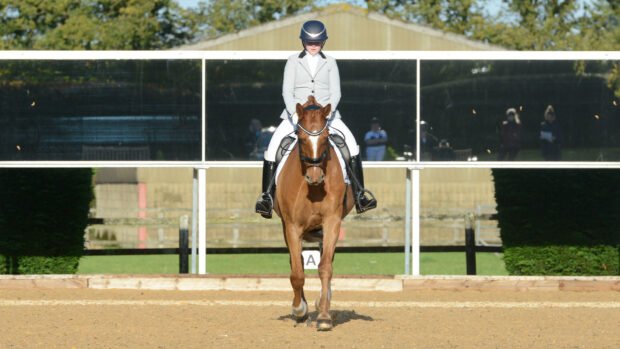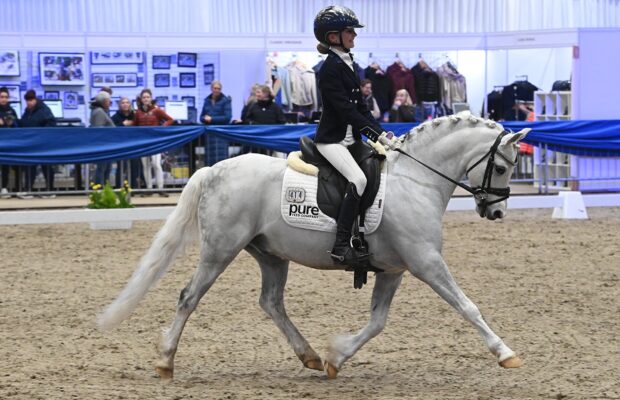Nicole Kallstrom is a barrel racer from the USA, where she started the sport aged nine. In 2010, Nicole and her mare, Blondie, broke the world record and held the title until 2013.
During her demonstration, alongside dressage trainer Adam Kemp at the International Eventing Forum last year, Nicole highlighted the perhaps unexpected similarities between training for the two very different disciplines.
“Training for both dressage and barrel racing is based on a common theme; understanding and educating horses. It doesn’t matter what discipline you’re in, horsemanship is so important,” said Nicole.
“In barrel racing, I don’t need to do all the fancy moves like in dressage, but the avenue of getting to the top of the sport and the training I do with my horses can certainly relate to other disciplines.”
Nicole highlights that across the sports, riders often feel the need to overcomplicate their training and use “gadgets” unnecessarily.
“While certain gadgets my be helpful, they are not the core foundations of horsemanship and are not required to make your horse good,” she said.
Comfort and correctness
Nicole draws similarities between “straightness” in dressage and what it means in her sport.
“It’s about the horse’s whole body connecting and his hind end working underneath him. For a horse to be its most powerful, dynamic and athletic, their whole body needs to be working together as one. As a rider, you can’t have the horse’s head turning and the hindquarters not engaging. You cannot ask a horse to do a fast, athletic movement without giving them the tools in their toolbox to do it well, comfortably and safely.
“Comfort and correctness are two very different things — as you’re teaching correctness, it may be uncomfortable to start with for the horse. But as they grow it becomes normal and therefore comfortable for them. They can then enjoy their job because they have all the tools to do it correct.”
Adam added: “It is the same concept in dressage. You have to give the horse the tools to work with and recognise that what you’re asking them to do may be difficult for them — you can’t expect a horse to want to do it unless you make it easy for them to do that. The horse has to have the correct toolbox so they can use themselves to keep their balance, regardless of which discipline.”
Nicole highlights that the “toolbox” can be built into every day riding — in theory, during a horse’s education you’re adding tools.
“As riders, we think we need to show them everything but actually we just need to show them one main thing; how to safely and most effectively use their body.”
Maintaining a soft connection
“What I mostly feel for with my horses is a soft connection through the reins. In barrel racing you only have contact on the inside rein. If I have a young horse that needs more support on the outside rein, I can pick it up. But eventually, I want to let that go because the horse needs to balance and be able to carry itself honestly, without the support of the rein,” explained Nicole. “The inside rein is just a guide for the horse and a support for the rider, it shouldn’t be relied on.”
Similar to dressage, maintaining a soft connection through the reins and an active backend is vital to be successful in barrel racing.
“You want the horse to be using his hind end, stepping forward and across on the turn round the barrel. If the back legs do not cross over and under, the horse just goes stiff and locks up — his hind end has to be free,” said Nicole.
“If the horse just swings around the barrel, you lose the engagement in the hind end — they need to be balanced and maintain temp.”
Adam compares this to a horse struggling to do a canter pirouette in dressage.
“This happens for the same reasons; a loss in balance, connection and activity in the hind end,” he said. “We often talk about connection in dressage being between the leg and the hand. However, communication comes through body and seat — similar to barrel racing, the reins should not be the primary aid.”
Would you like to read Horse & Hound’s independent journalism without any adverts? Join Horse & Hound Plus today and you can read all articles on HorseandHound.co.uk completely ad-free.




